Comments
Of Novak Djokovic, A Champion And Above All A Great Man
The Serbian donated one million euros to the hospitals in Bergamo, and did so without publicity. This is a great example of the great person he is, despite the crowd abuse he had to endure at Wimbledon against Federer. His authenticity has always been there, all the way since those Players Parties in Monte Carlo.
Published
4 years agoon
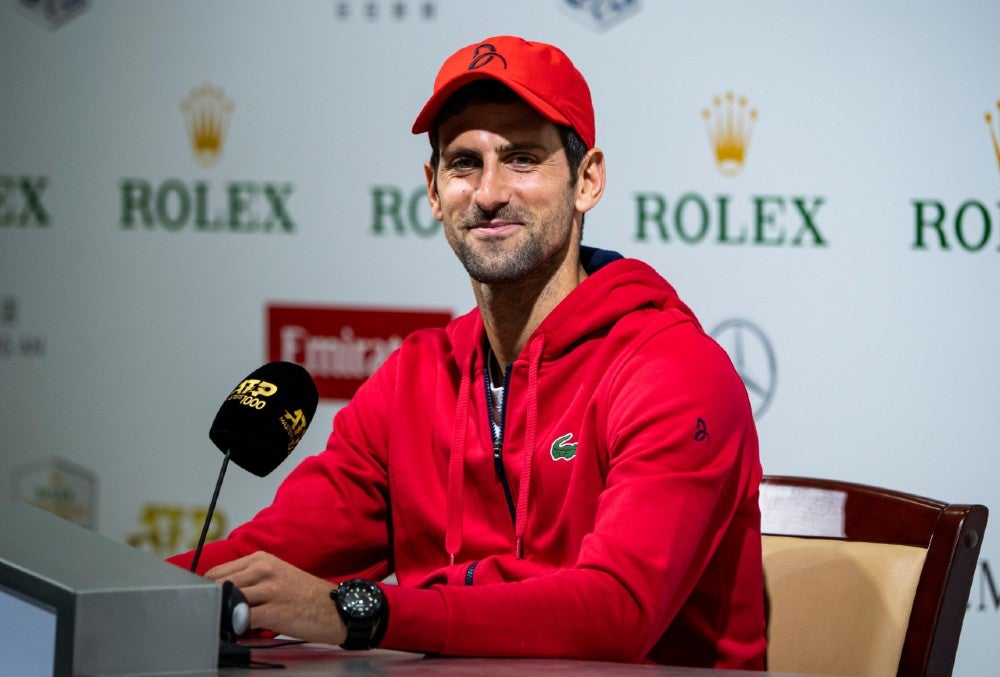
Novak Djokovic did something amazing, and the unprompted nature of his act did all but magnify his gallantry.
I’ve met him a few times, for instance when I was invited to the Players Party in Monte Carlo as either a comedic advisor or even as an actor, and I have to say that, whether one can like his brand of tennis which is – perfunctory to say – extraordinary, to be able to witness the charm, the spontaneity, and the effort he put in his duties as dancer, singer, and all-around showman, reinforced my first impression of him as a genuinely decent guy, not a conceited persona. This is why I always thought the attitude of the crowd during the last Wimbledon final against Federer to be utterly disgraceful to say the least. It’s one thing to choose a champion to cheer for, and another to disrespect his opponent, to the point of taking away from him the joys of victory and celebration. And as a matter of fact, Nole barely acknowledged his success. Sure, he will have thoroughly enjoyed it in his heart, but some bitterness must have crept in – and this is just unfair.
Many have said that Novak is constantly hurt by the greater popularity of Federer and Nadal, who had a head start in seizing the love of tennis fans, and then could live off it as with a trust fund. I don’t think Nole is jealous of his rivals. However, it is only human that he wishes for his humane side to be acknowledged a little more, as it happens in Serbia, where he is second to none in the estimation of his people. This happens in Italy as well, for the most part, thanks to his fluency in the language that allows him to fully be himself wherever he goes, be it in stand-up comedy skits, at music festivals, or simply among the crowd. When he says that Italy is his second home, he says it sincerely, and that is true for his wife Jelena too, since she studied in Milan. When he says it, he’s not pandering to Roger and Rafa’s fans, he knows that they won’t switch sides. He has no obligation to say it, he does because he means it. Every single tournament winner thanks the organisers and the crowd, claiming that it’s the best event that could possibly be, we know it, it’s part of the game. But Djokovic, who loves Rome and its tournament, and is loved by the city in return, doesn’t mince words when he says that some things could and should be improved, especially in terms of court maintenance – his honesty should be appreciated.
We should also be more accepting of the diplomacy that his political role in the ATP Council entails at times, leading him to leave some questions unanswered. I don’t always agree with what Novak says, such as during the Gimelstob affair, at least initially. At the same time, though, it can’t be easy for a man in his position to pick a side during a quarrel like the one happening between the ATP Cup (backed by Tennis Australia) and the Davis Cup, a competition he has an unbreakable bond with, because of what it meant for him and for Serbia when they won it in 2010, changing the trajectory of his career for good, and for the better.
He’s stated publicly that he’s in favour of the creation of a single team event, but he knows very well that the interests at stake – involving multi-year contracts signed by Tennis Australia on one side, and by the ITF, Piqué, and Rakuten on the other – are not easily reconcilable, and thus he knows very well that his statement might sound hypocritical or utopian. However, being a “politician” of tennis, he’s aware that what he said is what the fans who do not have any economic agendas wish for, namely one competition that wouldn’t betray too much the storied past of the Davis Cup.
Well, I got caught up in the writing as usual, even if I was doing it on my phone with the idea of putting on paper just a couple lines (!) to commend Novak on his incredible gesture, and this is even more noticeable since I can only use one finger while writing on my phone (my children write at supersonic speed, and I have no idea how). All I wanted to do was to thank Novak Djokovic for being such a great champion, and even more for being such a great man. All that’s left to say is… NOT TOO BAD! To Nole,
Ubaldo
P.S. I’ll always regret missing the chance to play with him in Australia, when he told me, “Bring your racquet tomorrow!” Just one minute of that heinous spectacle of personal embarrassment would have been enough for me to be contented with myself! Alas, the temperature reached 40 degrees and the humidity was such that all outdoors play was suspended, and naturally I had no way to get onto the indoors ones between matches. That night Nole all but apologized and said: “We’ll do it in Rome then!”
Article translated from ubitennis.com by Tommaso Villa
You may like
-
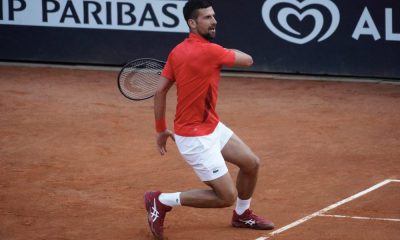

‘I Feel A Bit Embarrassed’ – Novak Djokovic On French Open Expectations
-
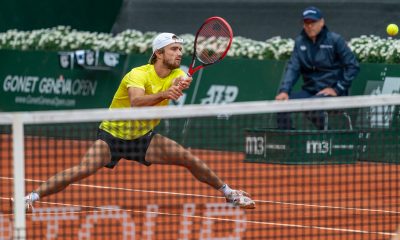

Tomas Machac Stuns Novak Djokovic To Reach Maiden ATP Final In Geneva
-
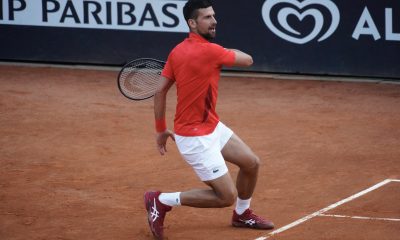

Novak Djokovic ‘Excited’ For French Open Showdown Between Nadal And Zverev
-
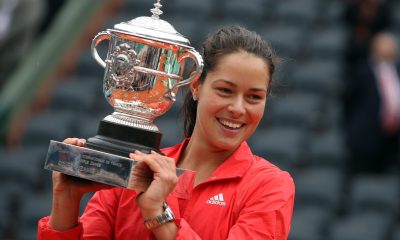

EXCLUSIVE: Ana Ivanovic’s 2024 French Open Picks
-


Steve Flink: The 2024 Italian Open Was Filled with Surprises
-


Novak Djokovic Accepts Geneva Wildcard Ahead Of Roland Garros
Comments
Steve Flink: The 2024 Italian Open Was Filled with Surprises
Published
1 week agoon
20/05/2024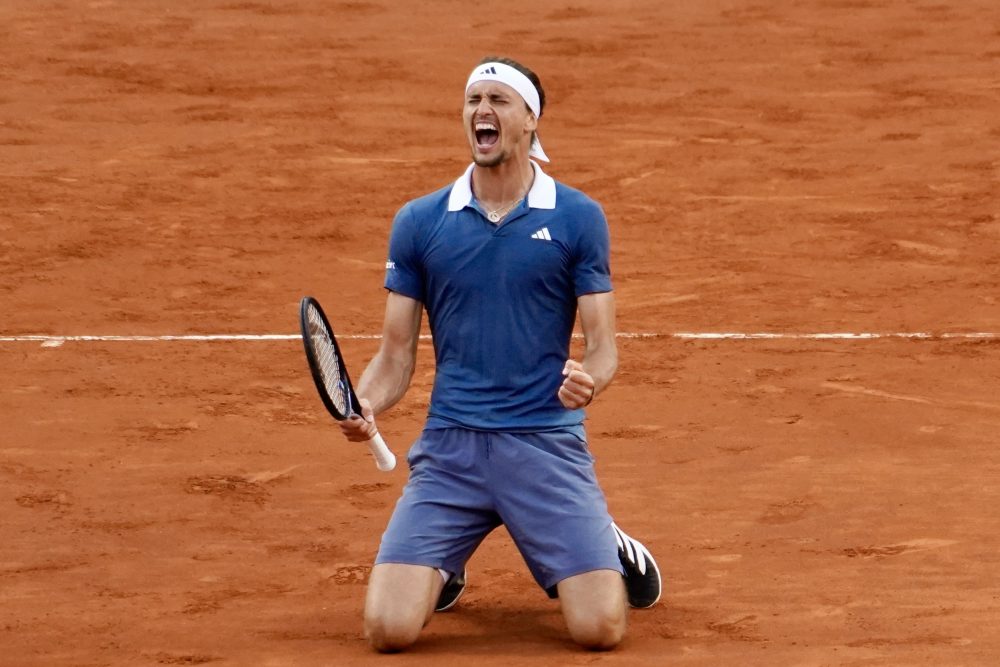
In sweeping majestically to his sixth career Masters 1000 title along with a second crown at the Italian Open in Rome, Germany’s Sascha Zverev put on one of the most self assured performances of his career to cast aside the Chilean Nicolas Jarry 6-4, 7-5 in the final. By virtue of securing his 22nd career ATP Tour title and his first of 2024, Zverev has moved from No. 5 up to No. 4 in the world. That could be crucial to his cause when he moves on to Roland Garros as the French Open favorite in the eyes of some experts.
Zverev is long overdue to win a major title for the first time in his storied career. Not only has he won those six tournaments at the elite 1000 level, but twice— in 2018 and 2021—he has triumphed at the prestigious, year end ATP Finals reserved solely for the top eight players in the world. This triumph on the red clay of Rome is a serious step forward for the 27-year-old who has demonstrably been as prodigious on clay as he is on hard courts.
Seldom if ever have I seen a more supreme display of serving in a final round skirmish on clay than what Zverev displayed against Jarry on this occasion. He never faced a break point and was not even pushed to deuce. Altogether, Zverev took 44 of his 49 service points across the two sets in his eleven service games. He won 20 of 21 points on his deadly delivery in the first set and 24 of 28 in the second. He poured in 80% of his first serves and managed half a dozen aces and countless service winners. His power, precision and directional deception was extraordinary.
Although the scoreline in this confrontation looks somewhat close, that was not the case at all. Jarry was thoroughly outplayed by Zverev from the backcourt, and despite some stellar serving of his own sporadically, he could not maintain a sufficiently high level. He did manage to win 78% of his first serve points, but Jarry was down at 35% on second serve points won. In the final analysis, this was a final round appointment that was ultimately a showcase for the greatness of Zverev more than anything else. Jarry was too often akin to a spectator at his own match as Zverev clinically took him apart.
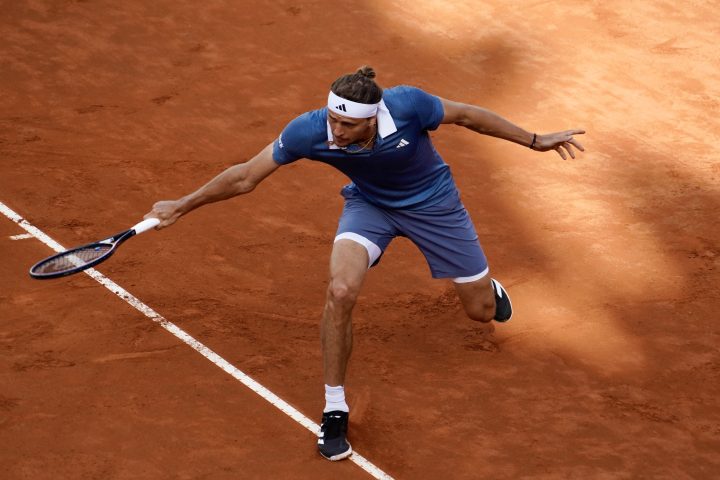
Zverev and Jarry arrived in the final contrastingly. The German’s journey to the title round was relatively straightforward. After a first round bye, he handled world No. 70 Aleksandar Vukic. Zverev dismissed the Australian 6-0, 6-4. The No. 3 seed next accounted for Italy’s Luciano Darderi 7-6 (3), 6-2. In the round of 16, Zverev comfortably disposed of Portugal’s Nuno Borges, ousting the world No. 53 by scores of 6-2, 7-5. Perhaps Zverev’s finest match prior to the final was a 6-4, 6-3 quarterfinal dissection of Taylor Fritz, a much improved player on clay this season. Zverev did not face a break point in taking apart the 26-year-old 6-4, 6-3 with almost regal authority from the backcourt.
Only in the penultimate round was Zverev stretched to his limits. Confronting the gifted Alejandro Tabilo of Chile, he was outplayed decidedly in the first set against the left-hander. The second set of their semifinal was on serve all the way, and the outcome was settled in a tie-break. With Tabilo apprehensive because he was on the verge of reaching the most important final of his career, Zverev was locked in. After commencing that sequence with a double fault, Zverev fell behind 0-2 but hardly put a foot out of line thereafter.
He did not miss a first serve after the double fault and his ground game was unerring. Zverev took that tie-break deservedly 7-4, and never looked back, winning 16 of 19 service points, breaking an imploding Tabilo twice, and coming through 1-6, 7-6 (4), 6-2. Zverev displayed considerable poise under pressure late in the second set to move past a man who had produced a startling third round upset of top seeded Novak Djokovic.
As for Jarry, the dynamic Chilean had a first round bye as well, and then advanced 6-2, 7-6 (6) over the Italian Matteo Arnaldi. Taking on another Italian in the third round, Jarry survived an arduous duel with Stefano Napolitano 6-2, 4-6, 6-4. He then cast aside the Frenchman Alexandre Muller 7-5, 6-3.
Around the corner, trouble loomed. Jarry had to fight ferociously to defeat No. 6 seed Stefanos Tsitsipas, who had by then established himself in the eyes of most astute observers as the tournament favorite. Tsitsipas has been revitalized since securing a third crown in Monte Carlo several in April. And in his round of 16 encounter, the Greek competitor had looked nothing less than stupendous in routing the Australian Alex de Minaur 6-1, 6-2.
Unsurprisingly, Tsitsipas seemed in command against Jarry in their stirring quarterfinal. He won the first set and had two big openings in the second. Jarry served at 3-3, 0-40. Tsitsipas missed a lob off the backhand by inches on the first break point before Jarry unleashed an ace followed by a service winner. The Chilean climbed out of that corner and got the hold. Then, at 5-5, Tsitsipas reached double break point at 15-40 but once more he was unable to convert. He got a bad bounce on the first break point that caused him to miss a forehand from mid-court. On the second, Jarry’s forehand down the line was simply too good.
Now serving at 5-6, Tsitsipas had not yet been broken across two sets. One more hold would have taken him into a tie-break and given him a good chance to close the account. But Tsitsipas won only one point in that twelfth game and a determined Jarry sealed the set 7-5.
Nonetheless, Tsitsipas moved out in front 2-1 in the third set, breaking serve in the third game. Jarry broke right back. Later, Tsitsipas served to stay in then match at 4-5 in that final set. He fought off three match points but a bold and unrelenting Jarry came through on the fourth to win 3-6, 7-5, 6-4. That set the stage for a semifinal between Jarry and a surging Tommy Paul, fresh from back to back upset wins over Daniil Medvedev and Hubert Hurkacz.
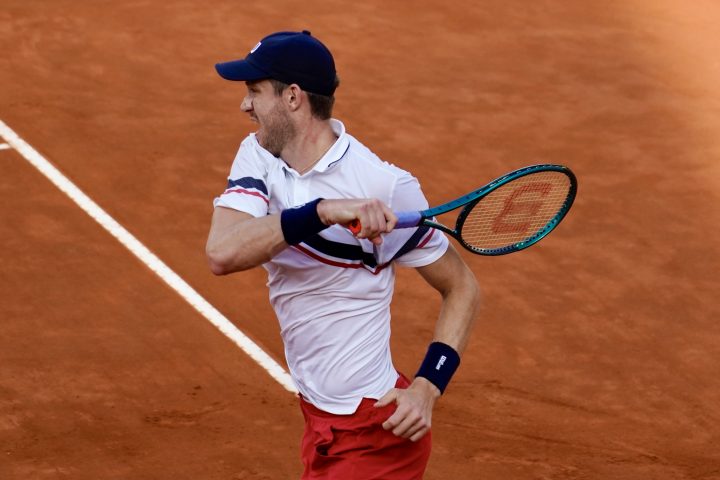
Jarry and Paul put on a sparkling show. Jarry took the opening set in 42 minutes, gaining the crucial service break for 5-3 and serving it out at 15 with an ace out wide. When Jarry built a 4-2 second set lead, he seemed well on his way to a straight sets triumph. But Paul had broken the big serving Hurkacz no fewer than seven times in the quarters. He is a first rate returner. The American broke back for 4-4 against Jarry and prevailed deservedly in a second set tie-break 7-3 after establishing a 4-0 lead.
Briefly, the momentum was with Paul. But not for long. Jarry saved a break point with an overhead winner at 2-2 in the final set, broke Paul in the next game, and swiftly moved on to 5-2. At 5-3, he served for the match and reached 40-0. But he missed a difficult forehand pass on the first match point and Paul then released a backhand down the line winner and a crosscourt backhand that clipped the baseline and provoked a mistake from Jarry.
The Chilean cracked an ace to garner a fourth match point, only to net a backhand down the line volley that he well could have made. A resolute Paul then advanced to break point but Jarry connected with a potent first serve to set up a forehand winner. The American forged a second break point opportunity but Jarry erased that one with a scorching inside in forehand that was unanswerable. Another ace brought Jarry to match point for the fifth time, and this one went his way as Paul rolled a forehand long. Jarry was victorious 6-3, 6-7 (3), 6-3.
Meanwhile, while all of the attention was ultimately focussed on the two finalists, it was on the first weekend of the tournament that the two dominant Italian Open champions of the past twenty years were both ushered out of the tournament unceremoniously. First, Rafael Nadal, the ten-time champion in Rome, was beaten 6-1, 6-3 in the third round by Hurkacz as he competed in his third clay court tournament since coming back in April at Barcelona.
He had lost his second round match in Barcelona to De Minaur. In his next outing at Madrid, Nadal avenged that loss to the Australian and managed to win three matches altogether before he was blasted off the court by the big serving and explosive groundstrokes of Jiri Lehecka. In Rome, the Spaniard won one match before his contest with Hurkacz. The first two games of that showdown lasted 27 minutes. Nadal had five break points in the opening game and Hurkacz had two in the second game. Neither man broke and so it was 1-1.
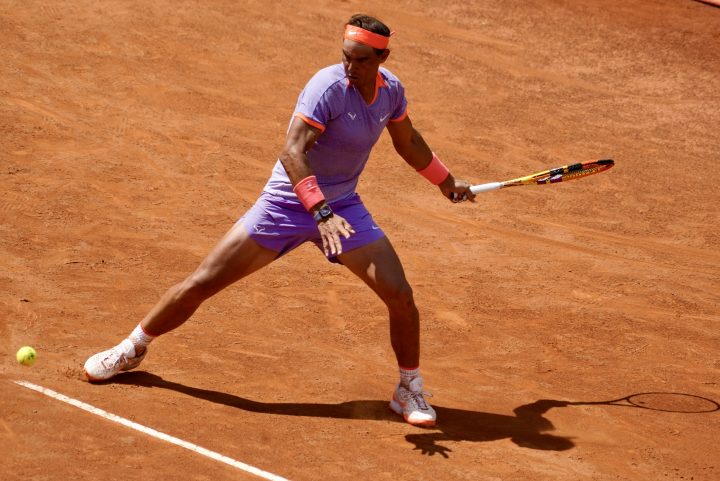
A hard fought and long encounter seemed almost inevitable, but the Polish 27-year-old swept five games in a row to take that first set, saving two more break points in the seventh game. He was mixing up his ground game beautifully, hitting high trajectory shots to keep Nadal at bay and off balance, then ripping flat shots to rush the Spaniard into errors. In the second set, Hurkacz broke early and completely outclassed Nadal. He also served him off the court, winning 16 of 17 points on his devastatingly effective delivery. With one more break at the end, Hurkacz surged to a 6-1, 6-3 triumph.
A day later, Djokovic, the six-time Italian Open victor, met Tabilo in his third round contest. Djokovic had played well in his second round meeting against the Frenchman against Corentin Moutet to win 6-3, 6-1. But afterwards, Djokovic was hit in the head by a water bottle while signing autographs. He had the next day off but when he returned to play Tabilo, the Serbian was almost unrecognizable. Beaten 6-2, 6-3, Djokovic never even reached deuce on the Chilean’s serve. On top of that, Djokovic, broken four times in the match, double faulted on break point thrice including at set point down in the first set and when he was behind match point in the second. Tabilo was terrific off the ground and on serve, but Djokovic was listless, lacking in purpose and seemingly disoriented. Some astute observers including Jim Courier thought Djokovic might have suffered a concussion from the freakish water bottle incident, but he did tests back in Serbia which indicated that was not the case.
Now Djokovic has decided to give himself a chance— if all goes according to plan— to potentially play a string of much needed matches at the ATP 250 tournament in Geneva this week. All year long, he has played only 17 matches, winning 12 of those duels. But nine of those contests were at the beginning of the season in Australia. Since then, he has played only eight matches. On the clay, he went to the semifinals in Monte Carlo where he benefitted from four matches, but he skipped Madrid and hoped to find his form again in Rome.
Realizing that losing in the third round there left him not only lacking in match play but not up to par in terms of confidence as well, Djokovic will try to make amends in Geneva. A good showing in that clay court tournament— either winning the tournament or at least making the final—would send the Serbian into Roland Garros feeling much better about his chances to win the world’s premier clay court championship for the third time in four years and the fourth time overall in his career.
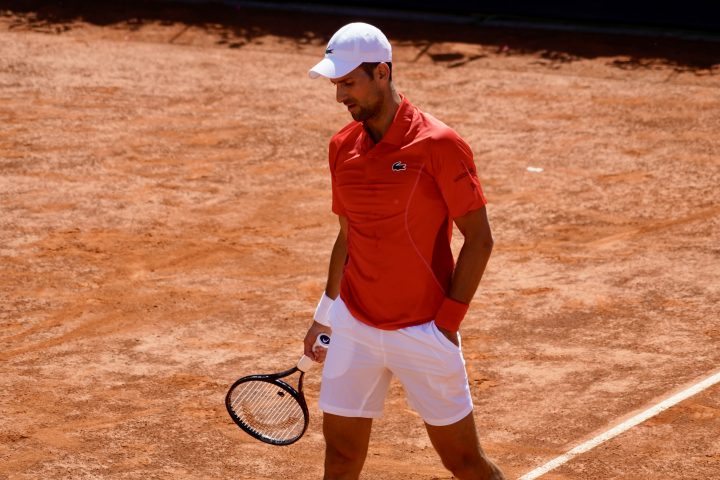
How do the other favorites stack up? It is awfully difficult to assess either Carlos Alcaraz or Jannik Sinner. Alcaraz missed Monte Carlo and Barcelona and probably rushed his return in Madrid, losing in the high altitude to Andrey Rublev in the quarterfinals. Then he was forced to miss Rome. He is clearly underprepared. As for Sinner, he played well in Monte Carlo before losing a semifinal to Tsitsipas. He advanced to the quarterfinals of Madrid but defaulted against Felix Auger-Aliassime with a hip injury.
Will Alcaraz and Sinner be back at full force in Paris? I have my doubts, but the fact remains that Sinner has been the best player in the world this year, capturing his first major in Melbourne at the Australian Open, adding titles in Rotterdam and Miami, and winning 28 of 30 matches over the course of the season. Alcaraz broke out of a long slump to defend his title at Indian Wells, but missing almost all of the clay court circuit en route to Rome has surely disrupted his rhythm.
I would make Zverev the slight favorite to win his first Grand Slam tournament at Roland Garros. If Djokovic can turn things around this week and rekindle his game, there is no reason he can’t succeed at Roland Garros again. I make him the second favorite. Out of respect for Alcaraz’s innate talent and unmistakable clay court comfort, I see him as the third most likely to succeed with Sinner close behind him. But that is assuming they are fit to play and fully ready to go.
Tsitsipas and Casper Ruud must be taken seriously as candidates for the title in Paris. Tsitsipas upended Medvedev and Zverev in 2021 to reach the Roland Garros final, and then found himself up two sets to love up against Djokovic before losing that hard fought battle in five sets. Ruud has been to the last two French Open finals, bowing against Nadal in 2022 and Djokovic a year ago. They started this clay court season magnificently, with Tsitsipas defeating Ruud in the Monte Carlo final and Ruud reversing that result in the final of Barcelona. Both men figure to be in the thick of things this time around at Roland Garros.
Where does Nadal fit into this picture? He will surely be more inspired at his home away from home than he was in his three other clay court tournaments leading up to Roland Garros, but it will take a monumental effort for the 14-time French Open victor to rule again this time around. With a decent draw, he could get to the round of 16 or perhaps the quarterfinals, but even that will be a hard task for him after all he has endured physically the last couple of years. Nadal turns 38 on June 3. If he somehow prevails once more in Paris, it would be the single most astonishing achievement of his sterling career.
The battle for clay court supremacy at Roland Garros will be fierce. The leading contenders will be highly motivated to find success. The defending champion will be in full pursuit of a 25th Grand Slam title. Inevitably, some gifted players will be ready to emerge, and others will be determined to reemerge. I am very much looking forward to watching it all unfold and discovering who will be the last man standing at the clay court capital of the world.
NOTE: All photos via Francesca Micheli/Ubitennis
Comments
Can Defensive Tennis Still Be A Success Story In Women’s Tennis?
Slam triumphs, top rankings: in just a few years we have witnessed the rise and fall of a certain way of playing tennis. So what’s really been happening? Kerber, Halep, and Wozniacki have been the latest successful performers of defensive gameplay.
Published
2 weeks agoon
13/05/2024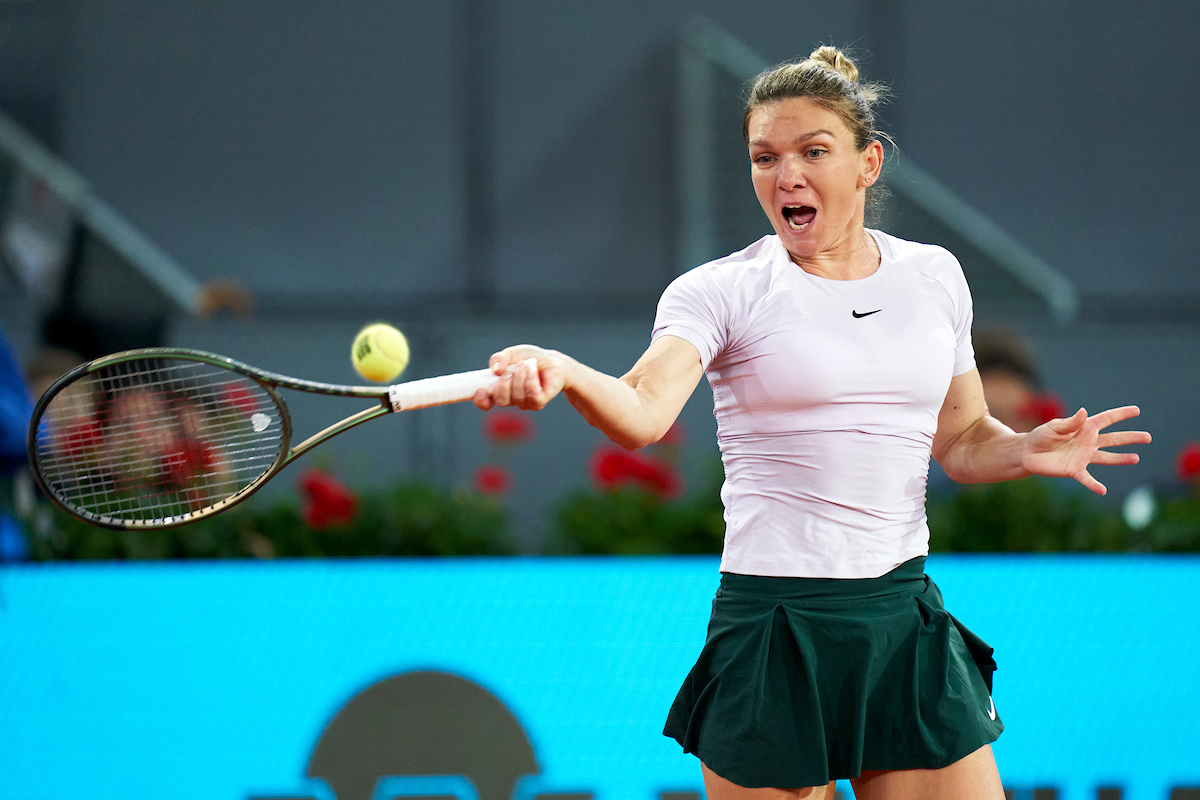
The last two WTA 1000 events, Miami and Madrid, whose final featured Danielle Collins vs. Elena Rybakina and Iga Swiatek vs. Aryna Sabalenka respectively, have confirmed a trend that in recent seasons seems more and more entrenched in the women’s tour: the prevalence of offensive tennis over defensive tennis.
Compared to a few years ago, things seem to have profoundly changed, to the point of almost being reversed. This does not mean that a certain type of “reactive” game has disappeared, nor that tennis based on the effectiveness of the defensive component has been scrapped. Yet, it is a matter of fact that players who rely predominantly on this approach struggle to break through and reach the top positions, unlike just a few years ago.
Before trying to identify the reasons for this phenomenon, it is necessary to verify whether the thesis is true. Here are some data. Below are the WTA rankings of the past years starting from 2015. I have highlighted in yellow the players who, in my opinion, can be associated with a defensive type of tennis.
A first comment on the 2015-17 period and the players I highlighted. Few doubts about Wozniacki, Kerber, Svitolina, and Errani. These are athletes who were never afraid of engaging in long rallies, and who often strove to turn the match into an endurance challenge, an arm wrestle over durability. It was not logical for them to seek quick and rushed points.
Including Simona Halep may seem less obvious. However, in my view, in her approach there prevails a tendency to rely on a “reaction” strategy, hitting back at her opponent’s choices; a counter-attack game, specular to an idea of pure aggressive tennis based on systematically and immediately getting the upper hand in rallies.
That is why I also highlighted Radwanska and Sevastova. In their case, it was mainly their lack of power that forced them to leverage their opponent’s power. As a result, hitting a winner could not be their first option. Winning points by eliciting errors from their opponent was far easier, simply by lengthening the rallies.
I was tempted to include Stephens and Kuznetsova as well, but in their case the matter is particularly complex because they are such eclectic players that they are difficult to confine to just one category. In fact, on the occasion of Sloane Stephens’ victory in the 2017 US Open, I decided to describe Stephens as “indefinable.”
Now let’s move on to the next three years, 2018 to 2020.
2018 represents the pinnacle of defensive tennis, with four of its icons at the top of the rankings and three more in the top 15. After all, 2018 is the year that sees Wozniacki win in Australia (defeating Halep in the final), Halep in Paris, and Kerber at Wimbledon. At the WTA Finals in Singapore, Elina Svitolina reaps the most prestigious title of her career.
If 2018 is to be considered the zenith of defensive tennis, since 2019 there has been quite a crushing decline, confirmed by the rankings of the last three years, 2021 to 2023.
Here follows a chart of the results in the Slams and WTA Finals from 2015 to 2024.
The final Top 10 ranking 2023 featured no player with a markedly defensive imprint. Daria Kasatkina was the only flagbearer holding on in the top 20. Players deploying aggressive tennis now seem to have taken the lead in operations.
Which are the causes that have led to the current scenario? I have identified three, which may also have been acting jointly.
1) Lack of generational turnover
One possible thesis is that the structural conditions of the women’s tour haven’t changed significantly, but that we are simply going through an episodic lack of generational turnover in defensive tennis. A temporary blackout which is bound to be overcome over time.
Wozniacki (born 1990) and Kerber (born 1988) were halted first by physical issues and then by maternity leave. Maternity also for Svitolina (born 1994), while Halep (born 1991) has been sidelined for almost two years by her doping case. In essence, all of the strongest defensive tennis players have disappeared from the top ranks due to factors unrelated to the court; somewhat prematurely, and that is also why there has not been time to find successors.
On the other hand, as of today, there are not many players aged under 30 on the horizon. I would mention Mertens (born 1995) and Kasatkina (born 1997). If we take into account that a possible alternative like Sorribes Tormo (best ranking 28) is 27, it’s quite hard to identify who can perpetuate defensive tennis.
2) Changed game conditions
For this second hypothesis, we are venturing along a complex and uneven path, which would require much more space for being addressed as it deserves. In short, the proposition holds that “slow” playing conditions favour defensive tennis, whereas “fast” playing conditions snugly fit with aggressive tennis. Should this hypothesis turn out to be grounded, organizers would simply have to decide to speed up or slow down the playing conditions and tables would be turned.
I recall the “very slow” 2018 WTA Finals in Singapore, won by Svitolina over Stephens. As far as I am concerned, I do not have such data to suggest that in recent years the playing conditions have been sped up, thus penalizing defensive players. Almost certainly the last Finals (Guadalajara, Forth Worth, and Cancun) were played in faster conditions than the previous editions held in Asia, but it is far more complicated to prove this for the Slams and other major tournaments.
I remember that when talking about playing conditions, not only the surface of the courts should be taken into account, but also the balls used (as well as humidity, altitude, etc). And for some essential data there no certainties, which means that the thesis is possible, but not provable.
3) Further growth of offensive players
Third hypothesis: in recent seasons new aggressive players who have risen to the very top have also enhanced the quality of their tennis, raising the bar to such heights which appear to be out of the reach of defensive players. Ultimately, offensive players have been making greater strides than defensive players.
I would say that such growth has manifested itself in two different directions. On the one hand, some players have further strengthened the offensive component, starting with the quality of their serve or and groundstrokes (as in the case of Rybakina and Sabalenka).
On the other, fewer “one-dimensional” tennis players have emerged. Currently we are seeing athletes who are comfortable not only when commanding the rally, but also when compelled to defend themselves. Let’s consider the latest year-end No. 1s: we went from Kerber/Halep (2016-18) to Barty/Swiatek (2019-2023). Well, both Barty and Swiatek were and are players capable of producing more wins than Angelique and Simona, but without going down when under pressure or scurrying and scrambling.
Wozniacki, Kerber, and Halep have relied on their great mobility and superior court coverage skills to reach the top. However, today No. 1 spot is held by a tennis player like Swiatek who, besides being a remarkable ball-striker, in terms of mobility is not at all inferior to Wozniacki & Co.
Indeed, my personal belief is that Iga is probably the best-moving tennis player since Steffi Graf. Maybe not yet when moving forward, but at least horizontally, off her right and left wing. In fact, as well as being endowed with a superlative rapidity and responsiveness, Swiatek possesses phenomenal coordination skills. A gift that enables her to organize her swing in very few moments, even if she is called upon to execute it at the end of a sprint or lunge, perhaps sliding. This means that those players who rely mainly on defensive skills are likely to find themselves lacking sufficient weapons to face an opponent with such qualities.
Conclusions
This is the current situation. What about the future? Since I do not possess a magic crystal ball, I do not feel like reciting a “de profundis” for defensive tennis. Things could change, especially in the long term.
In the short term, there is still the possibility that the “senior” players will be able to retrieve their best levels. After all, already last year at Wimbledon Svitolina was able to reach the semifinals after ousting Swiatek in the quarters. And probably if she had managed to defeat Vondrousova in the semifinals, in my opinion, she would have had very good chances against Jabeur, considering their records in finals (Ons 5 won and 8 lost, Elina 17 won and 5 lost).
Before being halted by Vondrousova, Svitolina had appeared as full of conviction, recharged by her maternity break. Which brings us back to the mental component, which can sometimes prove to be the extra weapon, capable of overshadowing physical-technical aspects. If a defensive player endowed with an exceptional killer instinct were to burst into the WTA tour, quite different scenarios might open up.
Translated by Carla Montaruli
Comments
Could Regional Groups Boost Davis Cup’s Appeal?
Home-and-away ties are charming, but may be complicated and expensive. Round-robin groups are efficient, but may lack atmosphere. A possible solution for Davis Cup to have the cake and eat it, too
Published
4 months agoon
06/02/2024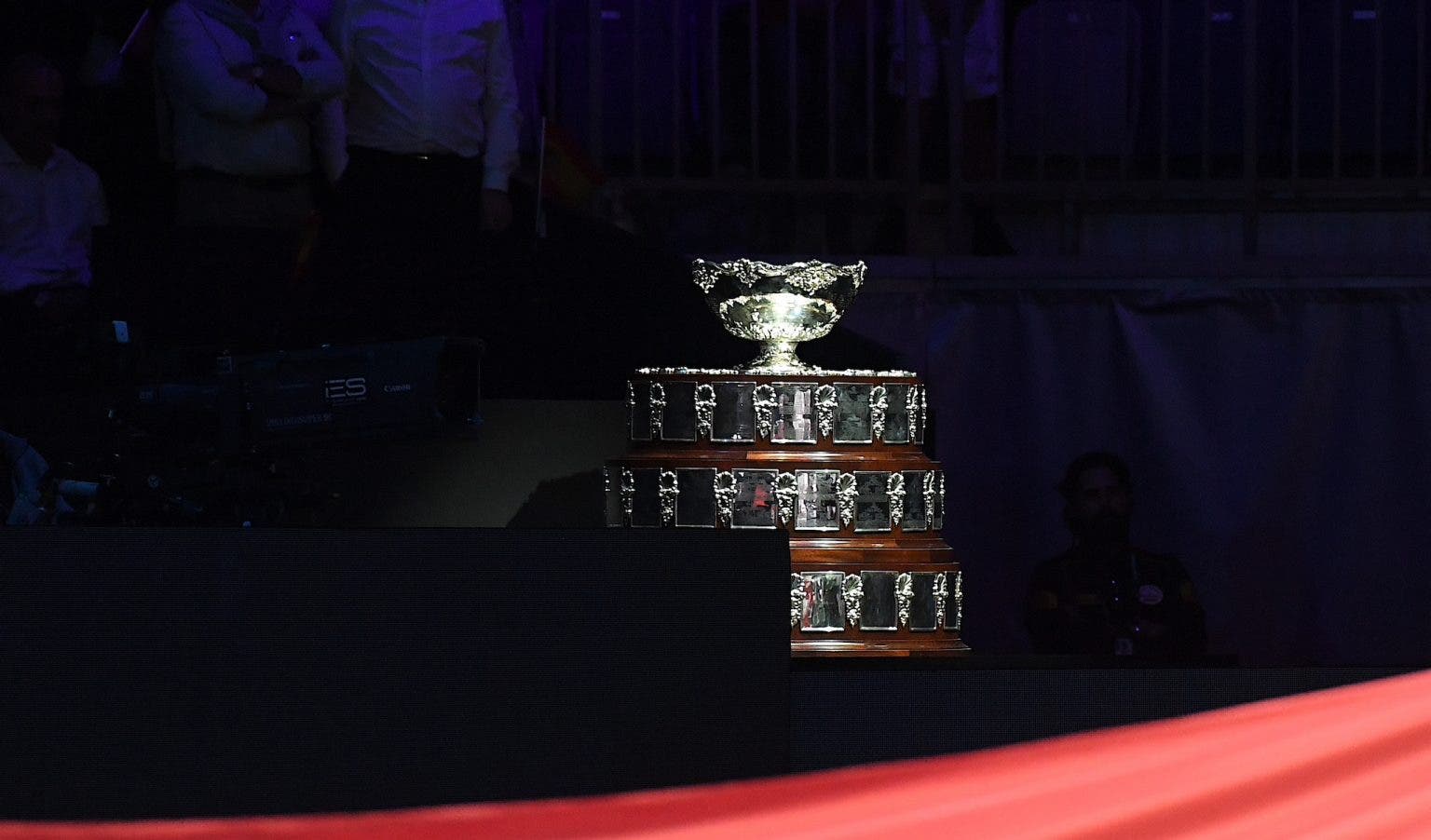
The Australian Open ended barely a week ago and tennis has celebrated another milestone of its ever-grueling calendar. The past weekend saw Davis Cup select the 16 teams for the final stage of the competition through the Qualifiers that took place across continents and time zones.
We gave an account of the results of these 12 ties, some of which ended in a nailbiter, over the course of the past few days. Here, however, we want to stress once again how this highly criticized event, profoundly changed in its formula by the “Kosmos revolution”, still manages to generate unique emotions in its actors despite the lack of some components that had accompanied its history for over a century.
Durante el fin de semana me dediqué a hacer un seguimiento de cómo vive Nicolás Massú una serie de Copa Davis. Es su décimo año como capitán y lo vive como si fuera su primer día siendo jugador. Esto salió. Como leí por ahí, es el chileno más chileno que existe. Es un héroe. pic.twitter.com/xemKoCqhk2
— Rodrigo Huerta (@rodrigohuertam) February 5, 2024
The tears of Nicolas Massu, captain of the Chilean national team, after the victory of the decisive match by Alejandro Tabilo over Peruvian Ignacio Buse summarise what Davis Cup means in that country, in which there are entire areas devastated by fires and whose populations were mentioned by the former Olympic gold medalist: “This victory is for those who are going through a difficult time – said Massu in front of the packed stands of the Estadio Nacional in Santiago even though it was already past midnight – in the hope that it can bring them at least a little happiness.”
Nicolás Massú, capitán de Chile en la Copa Davis, dedicó el dramático triunfo de Chile a las víctimas de los incendios: "Este triunfo es para todas las personas que lo están pasando mal"#Tabilo #Massú #Buse #Valparaíso pic.twitter.com/rsCGuPakxh
— U. INFORMADO (@uinformado) February 5, 2024
The tie between Chile and Peru, won 3-2 by the hosts, reminded everyone, in case it was needed, of the charm of the “home and away” component of the Davis Cup, that is when one of the teams hosts the opponent on their own turf. But he wasn’t the only one: the tie decided in the third set tie-break in the deciding singles between Argentina and Kazakhstan, played on clay in Rosario, in which Sebastian Baez angrily snatched the last four points against Dmitry Popko, as the light was fading in the Argentine summer evening, provided a moment of great emotional intensity.
And it is worth noting that nothing has been taken away from the drama of these matches by the distance of the two sets out of three of all the matches: the “best of five” would have lengthened the matches and made some of these clashes as epic as perhaps impossible to follow by a television audience that cannot have entire days available (and it would have been three days instead of two) to follow Davis Cup matches.
This year the ITF has granted greater flexibility on the scheduling of matches: when this new formula debuted, the “home and away” ties had to be played on Friday and Saturday, to leave Sunday as a travel day for players who had to reach the venue of the next tournament. However, we have now seen different variations, with some host countries deciding to play on Saturday and Sunday to maximize the attendance of the crowd. The match between Ukraine and the USA even took place on Thursday and Friday in Vilnius, Lithuania, to facilitate the return of American players to Dallas, home of the next ATP tournament.
This Davis Cup formula is not perfect, this has been clear for quite some time. And the ITF, now back in control of the event after the failure of the Kosmos experiment, is going ahead in a succession of trials and errors trying to fit a round peg in a square hole, or rather safeguarding what good things the old Davis Cup formula still had by mixing them with the new element of the round-robin groups which significantly simplifies players’ lives, makes the competition logistically more predictable and, most importantly, limits the total cost of the competition.
The solution with the four groups in September and the knockout finals in November seems promising, but there are still too many matches played in front of half-empty arenas populated by only a few hundred fans. The groupings in a single venue, if on the one hand allow for more efficient logistical planning and limit unexpected changes of surface for the players, on the other hand in some cases remove the crowd factor which has very often been the essence of historic Davis Cup matches. One of the pillars of Kosmos’ vision, the ”World Cup of Tennis”, immediately proved to be an unattainable chimera, and that’s where Kosmos’ entire business plan started to crumble. Expecting tennis to have a sufficient number of fans willing to travel across the world to follow their national team, and do so every year, has proven to be completely unrealistic.
It is necessary to find corrective measures to bring the atmosphere of “home and away” ties to the arenas of round-robin groups. And one of these corrective measures could be to group the teams taking into consideration some geographic criteria. Up to this moment all the round-robin groups of the “new Davis Cup” have been played in Europe: many of the top players are European, most of the teams competing are European, and therefore it was a quite logical consequence. But if we look at the list of the 16 teams qualified for the September 2024 groups, we will notice that there are five teams from the American continent: Argentina, Brazil, Canada, Chile and the USA.
If it were possible to organize a grouping with four of these national teams in North America, Davis Cup would benefit immensely: a week-long event in a large arena in Canada or the USA, in a city with a strong immigrant component in which each of the South American national teams could count on a base of “local” fans, with the strong historical rivalries of these national teams (for example Canada vs USA, Argentina vs Brazil, Argentina vs Chile just to name a few) creating an incandescent atmosphere in the stands.
American players should not travel to Europe after the US Open and before the Asian swing, at that time NBA basketball and NHL hockey have not yet started, so it should not be difficult to find the availability of one of the iconic arenas in the United States or Canada. Furthermore, in this way, television broadcasters would also benefit as they would have some matches staggered by time zone instead of having four events almost all at the same time in Europe. Not to mention that American broadcasters would be able to show the ties of their own teams at more comfortable times, rather than early in the morning.
If we think about it, even American professional leagues such as the NBA and the NHL have created “divisions”, sub-groupings that require some teams to face each other more often than others, which not only limits the travel days in the very busy calendars of professional leagues but they are also designed to fuel historic rivalries in order to create an ever-increasing number of matches that can ignite the interest of fans.
The Davis Cup needs to find a similar mechanism to ensure that fewer and fewer aseptic matches are played in the echoing void of a deserted arena. In a few weeks the draw will decide the four September groups, when at least two of the three venues seem more or less safe (Bologna, Valencia and probably one in the United Kingdom). Last year the fourth venue for the September groups was Split, in Croatia, but this year Croatia will not take part in the Final stage after the defeat at home against Belgium last weekend. It will be unlikely that the ballot box will deliver an “entirely American group, but for the Davis Cup and for tennis it would be a godsend. Let’s hope the ITF can spot this enormous opportunity and acts accordingly.

Holger Rune Beats Evans in Straight Sets and Moves into Round 2

Roland Garros 2024: Casper Ruud Explains Geneva Decision, Martin Etcheverry Talks Roland Garros And Djokovic Influence

Roland Garros 2024: Alize Cornet Hands Out Advice After Ending 20 Year Career

Grand Slam Quarter-Finalist Van De Zandschulp Pondering Retirement After French Open Exit

“It’s Purely Psychological” – Maria Sakkari Berates ‘Unacceptable’ French Open Defeat

Alexander Zverev Pays Tribute To Retiring Thiem After Rome Win

Sinner And Kalinskaya Confirmed As The Newest Tennis Couple

Erratic Novak Djokovic Booed Off Court After Shock Italian Open Defeat

Novak Djokovic ‘Excited’ For French Open Showdown Between Nadal And Zverev

Elena Rybakina Calls For Changes To Tour Calendar Amid Welfare Concerns

VIDEO EXCLUSIVE: Danielle Collins Triumphs In Miami As Elena Rybakina Pays The Price For Three Set Marathons

VIDEO EXCLUSIVE: Who Is The Better Player Between Jannik Sinner And Carlos Alcaraz?

(VIDEO) Miami Open Women’s Draw Preview: Is Iga Swiatek Unbeatable?

(VIDEO) Miami Open Men’s Draw Preview: Can Jannik Sinner Bounce Back?

(VIDEO) Carlos Alcaraz Reigns Supreme At Indian Wells, Continues Rivalry With Jannik Sinner
Trending
-

 Hot Topics2 days ago
Hot Topics2 days agoSinner And Kalinskaya Confirmed As The Newest Tennis Couple
-

 ATP3 days ago
ATP3 days ago‘Sunday, He Is Fu**ed’ – Corentin Moutet’s Coach Urges Fans To Taunt French Open Opponent
-

 Hot Topics1 day ago
Hot Topics1 day agoRafael Nadal Bows Out Of Possibly Final French Open To In-Form Zverev
-
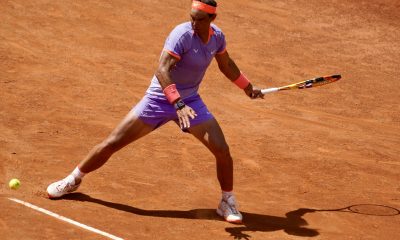
 ATP2 days ago
ATP2 days agoTraining Partner Griekspoor Backs Rafael Nadal To Challenge For French Open Title
-

 ATP2 days ago
ATP2 days agoFrench Open Player Avoids Disqualification After Striking Fan With Ball
-

 ATP2 days ago
ATP2 days ago‘I Feel A Bit Embarrassed’ – Novak Djokovic On French Open Expectations
-

 ATP2 days ago
ATP2 days agoFrench Open: Jack Draper Serves Up Trouble and is Upset by Dutch Qualifier De Jong
-

 Focus3 days ago
Focus3 days agoRoland Garros 2024: Naomi Osaka Edges Past Bronzetti In Opening Round Test

